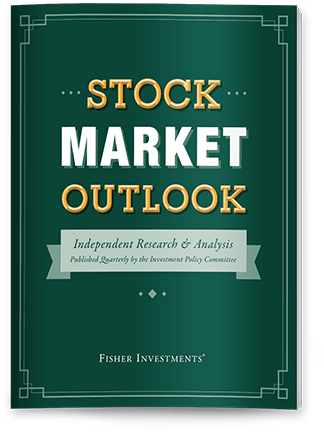Retirement Planning: Know Your Retirement Income Goals
The first part of determining an appropriate investment-income strategy is identifying what you want your money to do for you when you retire. Determining clear financial goals and objectives can help you create a retirement plan that incorporates your income needs and your financial goals.
It’s never too early to begin thinking about your retirement goals and what you need to do to reach them. In most cases, you will likely need your investments to provide income to meet your personal and financial needs during retirement. Retirement planning requires assessing both short-term and long-term needs and determining what steps you need to take to help ensure your investments can provide for both.
Determining Your Personal Objectives
A common theme for investors is planning for when they begin relying on investment income as their primary means of supporting their desired retirement lifestyle. To ensure sufficient annual retirement income, it’s essential to establish realistic goals, understand your investment time horizon and determine which investment strategy maximizes the likelihood of achieving your ideal retirement lifestyle.
Consider the following when thinking about your overall retirement savings goals and how they’ll affect your income needs:
- Do you want to maintain your current lifestyle during retirement?
- Do you want to move after you retire, and if so, how will that impact your cost of living?
- Do you plan to travel?
- Do you plan to spend all your money or pass on an inheritance to children or other heirs?
- Do you want to leave a legacy or endowment, or support philanthropic causes?

Where Might the Market Go Next?
Confidently tackle the market’s ups and downs with independent research and analysis that tells you where we think stocks are headed—and why.
When determining your personal retirement goals, it may help to reference some typical investor goals for retirement planning. Here are some of the most common investor goals we’ve seen:
- Avoid running out of money: This is a common fear among investors. You don’t want to find yourself having to turn to your children for cash or go back to work during retirement.
- Maintain or improve your lifestyle: You may want to preserve or even enhance your lifestyle during retirement. This means you will need to enhance your purchasing power over time to keep up with inflation.
- Increase wealth: If you are fortunate enough to enjoy the lifestyle you want without running out of money, your goal may be to grow your wealth over the longer term to leave a financial legacy for children, grandchildren or a charity.
- Spend everything: Some people want to spend all their money before they die. However, this choice could be risky since no one knows how long retirement will last. Judging incorrectly may leave you with extra time and not much money on which to rely.
To achieve your personal goals and address your income needs, you have to assess how long you might need your money to last, your planned withdrawal rate and cash flow, and how your investment strategy can benefit your specific situation.
Differentiating Retirement Income and Cash Flow
Income is money you receive from sources such as employment, stock dividends or bond coupon payments. Cash flow, in contrast, is money you withdraw from an investment account after selling a stock or other security.
When it comes to paying for your retirement, we recommend focusing on your portfolio’s total return (i.e., income and price appreciation) and your after-tax cash flow. Don’t be concerned if it comes from investment or non-investment sources. Instead, we encourage a “total return” approach, which includes bond interest, stock dividends, distributions and capital appreciation.
Consider Your Retirement Income Sources
When you look at your investments, consider how they should work for you to fulfill your retirement income needs and help you reach your retirement goals. For example, would extra luxuries, hobbies or travel require more or less money than your current income would afford?
If you need or want your retirement income to exceed your preretirement income, consider what income sources you’ll have available. How much money do you expect to receive from Social Security benefits when you reach retirement age? Will you receive distributions from a pension plan or an employer-sponsored retirement account? How accessible and liquid are your investments?
Cash is easy to access, but over time, inflation may reduce its buying power. Stocks and bonds are generally liquid and can provide growth and flexibility, especially in tax-advantaged retirement accounts. Annuities and real estate, on the other hand, may be less liquid. They may not be accessible immediately to provide cash flow.
Assessing Your Time Horizon
As you plan for income and cash flow needs, it is important to keep in mind that your living expenses could change over time. To help ensure you have enough money to cover those expenses, you should consider your investment time horizon, or how long you need your money to last.
Retirees today often overlook their investment time horizon, which may be longer than they think. Your investment time horizon may be your life expectancy, your spouse’s life expectancy or a different length of time, depending on your investment objectives.
Life expectancies have generally increased over the last half century. Healthy retirees may expect to live for 25 or more years in retirement. Unfortunately, a fixed monthly income may fail to meet your needs over the long term as inflation eats away at your purchasing power.
Consider the impact of inflation and a potentially longer investment time horizon when evaluating whether or not your retirement strategy is on track to meet your income needs and other financial objectives. A portfolio with a higher concentration in bonds may be too conservative to meet your longer-term needs if you end up living longer than you expected, or if you plan to leave assets for your heirs.
In addition to your lifestyle spending and savings goals, you should plan to have an emergency fund to help protect yourself from any unanticipated expenses after you retire. Medical costs frequently make up a large portion of retirees’ budgets. You may also need to consider the difficult topic of planning for unforeseen health issues. Financing long-term care or assisted living for yourself or a family member may raise your future annual expenses.
Preparing Your Plan
Your Current Retirement Savings and Financial Situation
It is important to look at your overall financial picture when assessing your financial situation and preparing a financial plan to meet your retirement income needs. Here’s a quick way to get started:
- Assess your investments and current retirement savings in traditional IRAs, Roth IRAs, 401(k) plans or other investment accounts.
- Consider your non-investment income sources, such as income from your annual salary, pensions or Social Security once you reach retirement age.
- Develop a cost estimate for retirement. You will need to use this information to select the asset allocation, which could include stocks, bonds, cash or a mixture of asset classes. Your personal objectives, long-term retirement goals and time horizon should all guide your asset allocation decision.
Anticipating Growth Needs
If you have a long investment time horizon, your portfolio may need to hold more high-growth securities, like equities. Holding high-growth assets can help ensure your portfolio can grow to allow you to keep pace with inflation. If you neglect to plan for a sufficient investment time horizon and the impact of inflation, you could find yourself with an overly conservative portfolio that won’t be able to meet your longer-term needs.
Your needs may change over time, so it’s important to develop a strategy that adapts as your growth and spending needs change throughout your retirement. To help ensure the best chance at providing the retirement income you need, your portfolio and asset allocation may need to adapt to different stages of your retirement or changes in your investment goals.
Implementing Your Strategy
Putting all these pieces together can be a complex process. A trusted financial adviser can help you assess your current investments or strategy and form a plan to achieve your retirement goals. They’ll also be able to provide professional know-how and discipline throughout the process.
Contact us today or download one of our educational retirement guides to discover how you can benefit from our services.




